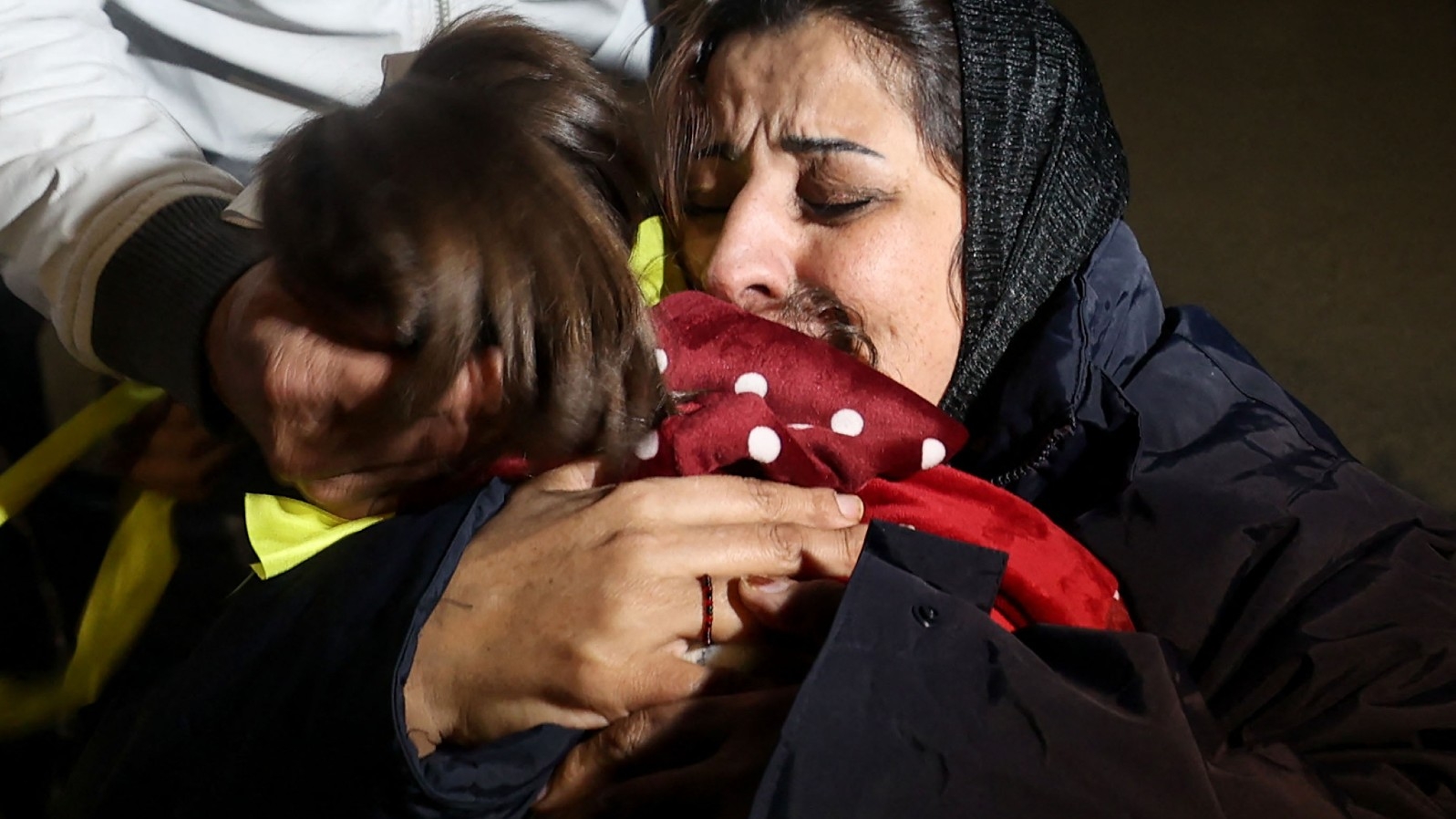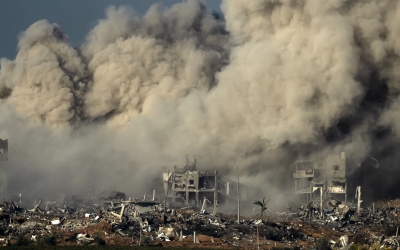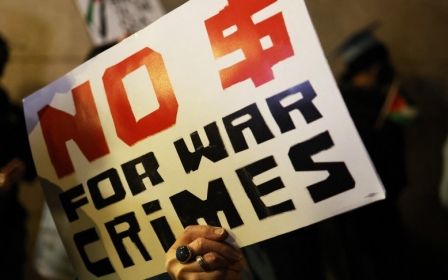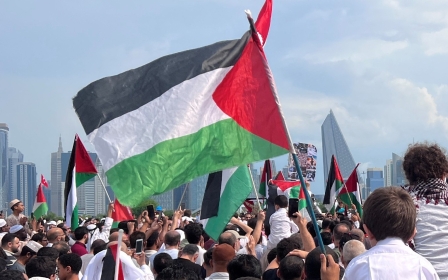Israel-Palestine war: Could a long-term truce be in the offing?

As the key brokers of the Israel-Hamas truce and prisoner exchange push to further extend the deal, they are also hoping to launch talks aimed at a permanent ceasefire, according to the Wall Street Journal.
The idea of a long-term hudna (truce) between Israel and the Palestinians originated in the early 1990s. It was referenced in February 1994 by Musa Abu Marzuq, who then headed the Hamas political bureau, in a statement published by the Amman weekly Al-Sabeel, the organ of the Jordanian Islamic movement.
A similar reference to this concept inside Palestine was made around the same time by Hamas founder Sheikh Ahmed Yassin from his prison cell. He proposed a hudna as an interim solution to the Israel-Palestine conflict.
Hamas repeated the offer on several occasions thereafter, but it failed to interest the Israelis. In recent days, the notion of a hudna has again been referenced by various Hamas spokespersons.
A hudna is recognised in Islamic jurisprudence as a legitimate and binding contract whose objective is to cease fighting with the enemy for an agreed period of time. It may be short or long, depending on mutual needs and interests.
New MEE newsletter: Jerusalem Dispatch
Sign up to get the latest insights and analysis on Israel-Palestine, alongside Turkey Unpacked and other MEE newsletters
Such a treaty would be different from the Oslo peace accords, under which the Palestine Liberation Organisation recognised the state of Israel and its right to exist.
The difference is that under a hudna, the issue of recognition would not come up, because Hamas, which is designated as a terrorist organisation by Israel and most western powers, has no authority to renounce the rights of Palestinians to return to the lands and homes from which they were forced out in 1948 or any time thereafter.
Historical context
Under the present circumstances, the best it could do is regain some of the land lost and secure the release of prisoners, in exchange for a cessation of hostilities. This would be somewhat similar to the Irish Republican Army (IRA) agreeing to negotiate an end to the conflict in Northern Ireland without recognising British sovereignty over the territory.
Many Irish Catholics continue to hope or dream that one day, the whole of Ireland will be united, and British rule will come to an end. Negotiating an end to the violence in Northern Ireland was never conditioned upon the IRA first renouncing this dream; had that been the case, no peace would ever have prevailed.
Follow Middle East Eye's live coverage for the latest on the Israel-Palestine war
In justifying a hudna, Hamas leaders can look to what happened between the Crusaders and Muslims in the last decade of the 12thcentury. The conflict between the two sides in Palestine and the surrounding region lasted for nearly two centuries. Of particular interest to Hamas in this regard is the Ramla treaty that Saladin concluded with Richard the Lionheart in September 1192.
It is highly unlikely that Hamas would settle for anything less than a return to 1967 borders in exchange for a long-term truce that could last for a quarter of a century or longer
The truce, which marked the end of the Third Crusade, held for a period of three years and three months, during which the Crusaders maintained control of the coast from Jaffa to Acre, and were allowed to visit Jerusalem and carry out commercial activities with Muslims.
In addition, reference is often made to the first hudna in the history of Islam. Known as the Treaty of Hudaybiya, named for the location on the outskirts of Mecca where it was concluded, the agreement saw the suspension of hostilities between the Muslim community in Medina under the Prophet Muhammad’s leadership and the tribe of Quraysh in Mecca.
The duration of the hudna agreed to by both sides was 10 years, but it was breached less than two years after its implementation by the Quraysh side, with the unlawful killing of some members of a tribe allied with the Prophet.
Once a hudna is concluded, it is considered sacred, and fulfilling its obligations becomes a religious duty. As long as the other side observes it, the Muslim side cannot breach it, for doing so is considered a grave sin. As with other international treaties, a hudna is renewable upon the expiry of its term by mutual agreement.
The long-term hudna that has previously been proposed by Hamas would stipulate an Israeli withdrawal to 1967 borders, meaning a return of all the land occupied by Israel in the Six-Day War, including East Jerusalem. This would entail the removal of all Jewish settlers from these areas. In addition, Israel would have to release all Palestinian prisoners.
In my opinion, in the current situation it is highly unlikely that Hamas would settle for anything less in exchange for a long-term truce that could last for a quarter of a century or longer.
Restoring normalcy
There have been at least three occasions on which a temporary hudna, usually referred to as a tahdi’ah (calming), has been unilaterally declared by Hamas and other Palestinian factions. One occurred during the Cairo talks of March 2005; it was supposed to last until the end of 2005 but went well beyond that.
The first tahdi’ah was in 2002, brokered by EU emissary Alastair Crooke. But it was shattered within weeks when Israel assassinated Hamas leader Salah Shehadeh on 22 July 2002.
My understanding is that Hamas shares a vision inspired by the South African reconciliation model, which brought apartheid to an end but kept all communities living together
Then, on 29 June 2003, Hamas and Islamic Jihad declared another unilateral truce. Hamas leader Abdel Aziz al-Rantisi explained that it was a gesture to give then newly appointed Prime Minister Mahmoud Abbas a chance to sort things out with the Israelis.
The unilateral tahdi’ah came to an end seven weeks later after Israeli forces raided Aaskar refugee camp on 8 August 2003 to arrest Hamas members. The attack resulted in the killing of four Palestinians. In response, a Jerusalem bus was bombed on 19 August 2003 killing around 20 Israelis and wounding dozens more. This was followed by Israel’s retaliatory assassination of Hamas leader Ismail Abu Shanab on 21 August 2003.
In fact, the Israelis seem not to have recognised or appreciated the unilateral truce declared by the Palestinian armed factions. Israel’s refusal to reciprocate led many Palestinians to lose confidence in the usefulness of declaring a unilateral truce.
Hamas has not said anything about what would happen upon the expiration of a long-term hudna signed with the Israelis. Such a deal would likely last for a quarter of a century or more, too long a time for anyone to predict what may happen afterwards. In addition, there is always the possibility that the hudna would end prematurely because of a breach.
It is also possible that after 20 or 30 years of peace in the region, so much would have changed in the world that Israel, as a Zionist entity, may not want - or may not have the ability - to operate the way it does today. As a matter of principle, Muslims, Christians and Jews can live together in the region, as they lived for many centuries before.
My understanding is that Hamas shares a vision inspired by the South African reconciliation model, which brought apartheid to an end but kept all communities living together. Zionism is sometimes equated with apartheid, and its removal is seen as the way forward if Muslims, Christians and Jews can again coexist in peace in the region.
It would be impossible for such a scenario to become reality without a long-term hudna that, for the lifetime of an entire generation, would allow communities in the region to restore some normalcy in their lives.
Those who are sceptical about a hudna may argue it is nothing but a prelude to finishing Israel off. In reality, a hudna would end the bloodshed and suffering for a given period of time, while each side could dream of how they may want the future to look, keeping the door open to all options.
The views expressed in this article belong to the authors and do not necessarily reflect the editorial policy of Middle East Eye.
Middle East Eye delivers independent and unrivalled coverage and analysis of the Middle East, North Africa and beyond. To learn more about republishing this content and the associated fees, please fill out this form. More about MEE can be found here.






